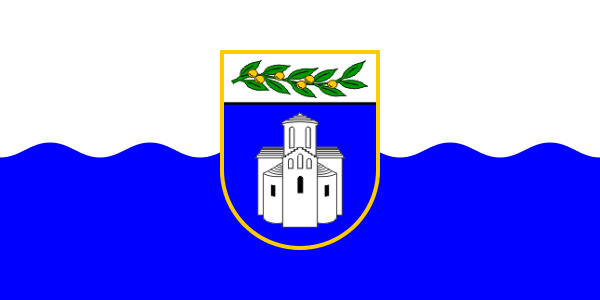|
Sukošan
Sukošan ( it, San Cassiano) is a village and a municipality in Zadar County, Croatia. It is located along the Adriatic tourism road between Zadar and Biograd na Moru. Population In the 2011 Croatian census, there were a total of 4,583 inhabitants in the municipality, in the following settlements: * Debeljak, population 919 * Glavica, population 185 * Gorica, population 671 * Sukošan, population 2,808 The majority of the population are Croats. Geography Sukošan is a holiday resort, with a spacious and cultivated long coastline, numerous coves and clean clear sea. Situated in a bay, Sukošan has few sand beaches. The town itself offers nice walks through the traditional narrow alleys. Known as a nautical center, Sukošan is a site of Zlatna luka Marina, the Tustica Nature Complex, pebble beaches, camping sites, distinguished buildings, olive groves, and vineyards. Culture Sukošan cherishes the old customs. They are linked to the feast of St. Kasijan, the patron saint o ... [...More Info...] [...Related Items...] OR: [Wikipedia] [Google] [Baidu] |
Zadar County
Zadar County ( hr, Zadarska županija ) is a county in Croatia, it encompasses northern Dalmatia and southeastern Lika. Its seat is the city of Zadar. Geography Among the largest towns in the county of Zadar are: Zadar, Benkovac, Bibinje, Biograd, Nin, Obrovac and Pag. The county of Zadar includes the islands of Dugi otok, Ugljan, Pašman, Molat, Lavdara, Zverinac, Vir and most of Pag, as well as a number of other, smaller islands. It also features the Paklenica national park. The county's area is 7,854 km2, 3,646 km2 is land, which accounts for 6.4% of the territory of Croatia. The sea area of the county is 3,632 km2 (around 12% of the territorial waters) and the insular area is 580 km2, with more than 300 smaller and larger islands (Zadar Archipelago). The length of its coastline (including the islands) is 1,300 km. Administrative division Zadar County is divided into: * City ** Zadar * Towns ** Benkovac ** Biograd na Moru ** Nin ** Obrova ... [...More Info...] [...Related Items...] OR: [Wikipedia] [Google] [Baidu] |
Municipalities Of Croatia
Municipalities in Croatia ( hr, općina; plural: ''općine'') are the second-lowest administrative unit of government in the country, and along with cities and towns (''grad'', plural: ''gradovi'') they form the second level of administrative subdisivion, after counties. Though equal in powers and administrative bodies, municipalities and towns differ in that municipalities are usually more likely to consist of a collection of villages in rural or suburban areas, whereas towns are more likely to cover urbanised areas. Croatian law defines municipalities as local self-government units which are established, in an area where several inhabited settlements represent a natural, economic and social entity, related to one other by the common interests of the area's population. As of 2017, the 21 counties of Croatia are subdivided into 128 towns and 428 municipalities. Tasks and organization Municipalities, within their self-governing scope of activities, perform the tasks of local ... [...More Info...] [...Related Items...] OR: [Wikipedia] [Google] [Baidu] |
Biograd Na Moru
Biograd na Moru (), shortened to simply Biograd (), is a town in northern Dalmatia, Croatia and is significant for being another capital of the medieval Kingdom of Croatia. Biograd is administratively part of the Zadar County. It is located on the Adriatic Sea coast, overlooking the island of Pašman, on the road from Zadar and Sukošan towards Vodice and Šibenik. Etymology The town's native croatian name fully translates as "the white town on the sea" in the local Ikavian dialect. The name ''Biograd'' is a compound literally meaning "white city" and etymologically corresponds to several other toponyms spread throughout the Slavic-speaking world: ''Beograd (Belgrade)'', ''Belgorod'', ''Białogard'', ''Belogradchik'' etc. The name was mentioned in the mid-10th century as a town founded in Kingdom of Croatia. It was rendered in Latin as Alba Maritima, meaning "the white maritime (one)". Geography Biograd na Moru is located 28 km south from the county capital, Zadar. It is l ... [...More Info...] [...Related Items...] OR: [Wikipedia] [Google] [Baidu] |
Cassian Of Imola
Cassian, or Saint Cassian of Imola, or Cassius was a Christian saint of the 4th century. His feast day is August 13. Life Little is known about his life, although the traditional accounts converge on some of the details of his martyrdom. He was a schoolmaster at Imola, but rather than sacrifice to the Roman gods, as so ordered by the current emperor, Julian the Apostate, he was condemned to death and turned over to his own pupils. Since they were eager for revenge for the many punishments he had inflicted on them, they bound him to a stake and tortured him to death by stabbing him with their pointed iron styli, the devices then used to mark wooden or wax writing tablets. Cassian suffered in one of the persecutions of the fourth century, but in which cannot be assigned with any certainty. He was interred by the Christians at Imola, where afterwards his relics were honoured with a rich mausolæum. His traditional date of martyrdom is August 13, 363, hence August 13 is his feast day ... [...More Info...] [...Related Items...] OR: [Wikipedia] [Google] [Baidu] |
Counties Of Croatia
The counties of Croatia ( hr, hrvatske županije) are the primary administrative subdivisions of the Republic of Croatia. Since they were re-established in 1992, Croatia has been divided into 20 counties and the capital city of Zagreb, which has the authority and legal status of both a county and a city (separate from the surrounding Zagreb County). As of 2015, the counties are subdivided into 128 cities and 428 (mostly rural) municipalities. The divisions have changed over time since the medieval Croatian state. They reflected territorial losses and expansions; changes in the political status of Dalmatia, Dubrovnik and Istria; and political circumstances, including the personal union and subsequent development of relations between the Kingdom of Croatia-Slavonia and the Kingdom of Hungary. Government County assembly ( hr, županijska skupština, label=none) is a representative and deliberative body in each county. Assembly members are elected for a four-year term by popu ... [...More Info...] [...Related Items...] OR: [Wikipedia] [Google] [Baidu] |
Mussel
Mussel () is the common name used for members of several families of bivalve molluscs, from saltwater and Freshwater bivalve, freshwater habitats. These groups have in common a shell whose outline is elongated and asymmetrical compared with other edible clams, which are often more or less rounded or oval. The word "mussel" is frequently used to mean the bivalves of the marine family Mytilidae, most of which live on exposed shores in the intertidal zone, attached by means of their strong Byssus, byssal threads ("beard") to a firm substrate. A few species (in the genus ''Bathymodiolus'') have colonised hydrothermal vents associated with deep ocean ridges. In most marine mussels the shell is longer than it is wide, being wedge-shaped or asymmetrical. The external colour of the shell is often dark blue, blackish, or brown, while the interior is silvery and somewhat nacreous. The common name "mussel" is also used for many freshwater bivalves, including the freshwater pearl mussels. F ... [...More Info...] [...Related Items...] OR: [Wikipedia] [Google] [Baidu] |
Fried Calamari
Squid is eaten in many cuisines; in English, the culinary name calamari is often used for squid dishes.''Oxford English Dictionary'', 3rd edition, 2002''s.v.''/ref> There are many ways to prepare and cook squid. Fried squid is common in the Mediterranean. In New Zealand, Australia, the United States, Canada, and South Africa, it is sold in fish and chip shops. In Britain, it can be found in Mediterranean 'calamari' or Asian 'salt and pepper fried squid' forms in various establishments, often served as a bar snack, street food, or starter. Squid can be prepared for consumption in a number of other ways. In Korea, it is sometimes served raw, and elsewhere it is used as sushi, sashimi and tempura items, grilled, stuffed, covered in batter, stewed in gravy and served in stir-fries, rice, and noodle dishes. Dried shredded squid is a common snack in some Asian regions, including East Asia. Use The body ( mantle) can be stuffed whole, cut into flat pieces or sliced into rings. T ... [...More Info...] [...Related Items...] OR: [Wikipedia] [Google] [Baidu] |
Croatian Interlace
The Croatian interlace or Croatian wattle, known as the or in Croatian, is a type of interlace, most characteristic for its three-ribbon pattern. It is one of the most often used patterns of pre-romanesque Croatian art. It is found on and within churches as well as monasteries built in early medieval Kingdom of Croatia between the 9th and beginning of the 12th century. The ornamental strings were sometimes grouped together with animal and herbal figures. Most representative examples of inscriptions embellished with the interlace include the Baška tablet, baptismal font of Duke Višeslav of Croatia and the Branimir Inscription. Other notable examples are located near Knin, in Ždrapanj and Žavić by the Bribir settlement, Rižinice near Solin and in Split and Zadar. Croatia has a civil and military decoration called the Order of the Croatian Interlace. Pleter Cross During the 8th century, the Pope assigned Croatia with its own idiosyncratic cross based on Croatian inte ... [...More Info...] [...Related Items...] OR: [Wikipedia] [Google] [Baidu] |
Nautical
Seamanship is the art, knowledge and competence of operating a ship, boat or other craft on water. The'' Oxford Dictionary'' states that seamanship is "The skill, techniques, or practice of handling a ship or boat at sea." It involves topics and development of specialised skills including: navigation and international maritime law and regulatory knowledge; weather, meteorology and forecasting; watchkeeping; ship-handling and small boat handling; operation of deck equipment, anchors and cables; ropework and line handling; communications; sailing; engines; execution of evolutions such as towing; cargo handling equipment, dangerous cargoes and cargo storage; dealing with emergencies; survival at sea and search and rescue; and fire fighting. The degree of knowledge needed within these areas is dependent upon the nature of the work and the type of vessel employed by a seafarer. History Ship knowledge, ship stability and cargo operations Seamanship on a commercial level involve ... [...More Info...] [...Related Items...] OR: [Wikipedia] [Google] [Baidu] |
Croats
The Croats (; hr, Hrvati ) are a South Slavic ethnic group who share a common Croatian ancestry, culture, history and language. They are also a recognized minority in a number of neighboring countries, namely Austria, the Czech Republic, Germany, Hungary, Italy, Montenegro, Romania, Serbia, Slovakia and Slovenia. Due to political, social and economic reasons, many Croats migrated to North and South America as well as New Zealand and later Australia, establishing a diaspora in the aftermath of World War II, with grassroots assistance from earlier communities and the Roman Catholic Church. In Croatia (the nation state), 3.9 million people identify themselves as Croats, and constitute about 90.4% of the population. Another 553,000 live in Bosnia and Herzegovina, where they are one of the three constituent ethnic groups, predominantly living in Western Herzegovina, Central Bosnia and Bosnian Posavina. The minority in Serbia number about 70,000, mostly in Vojvodina. The ... [...More Info...] [...Related Items...] OR: [Wikipedia] [Google] [Baidu] |








.png)